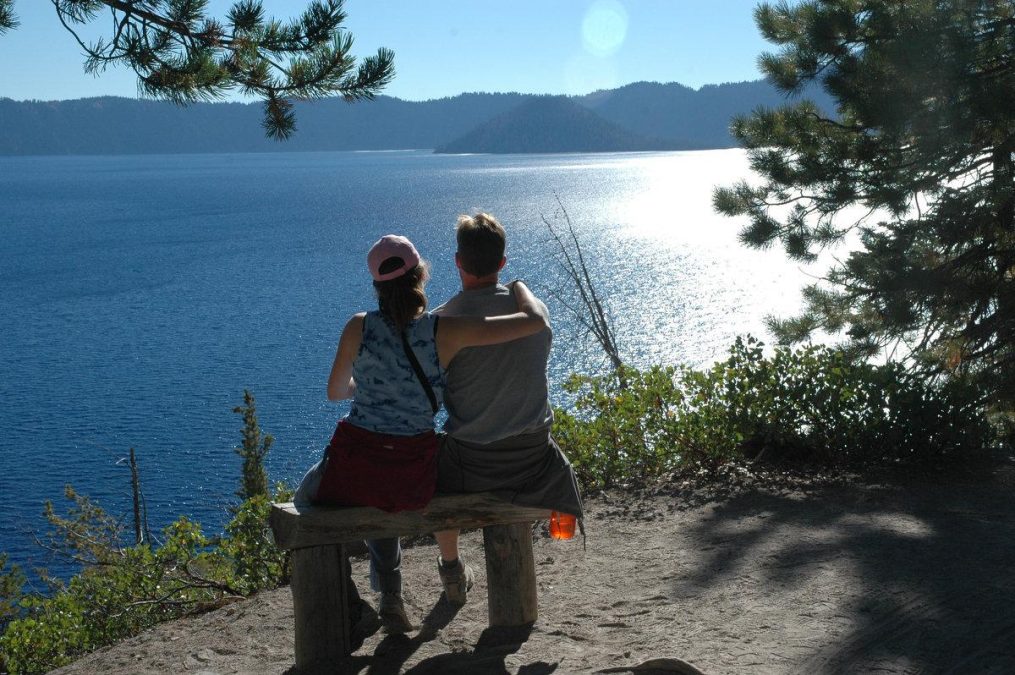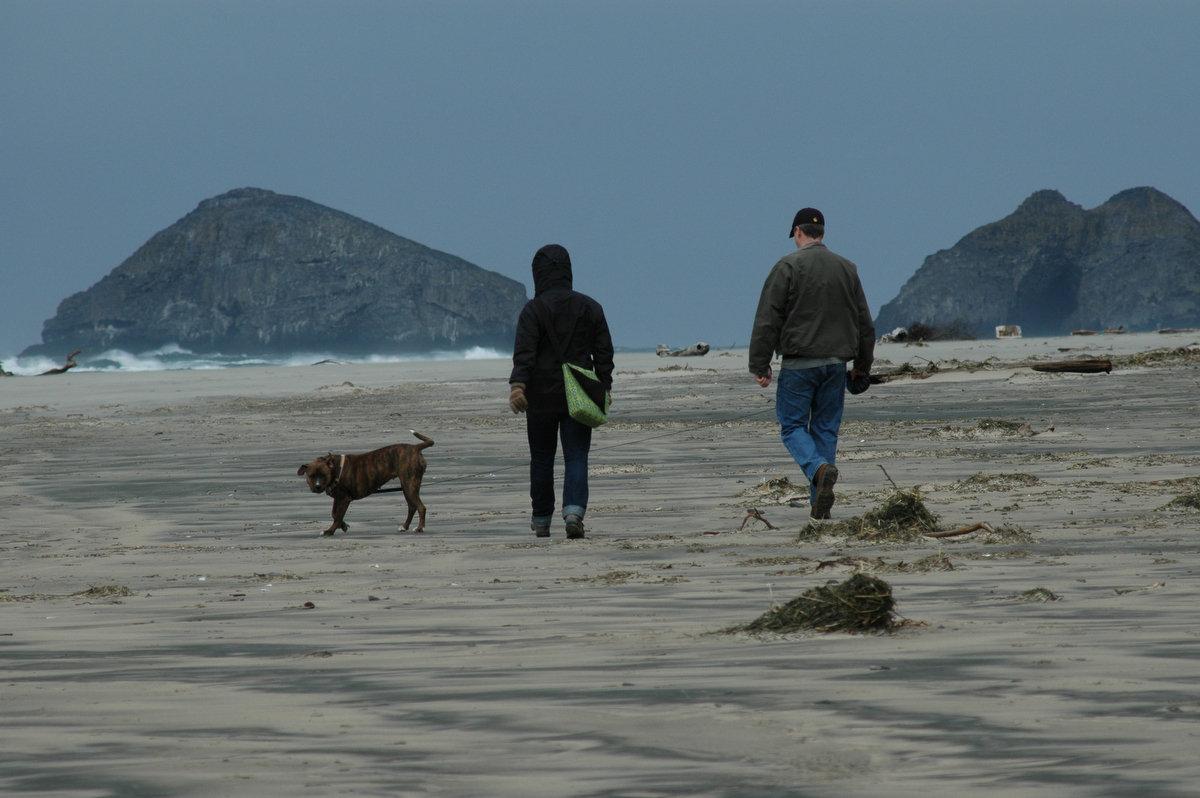Oregon, United States – Along the coastlines of the United States, hides Oregon—a land of diverse landscapes and breathtaking views. The coastal gem offers over 360 state parks, but it is not just natural beauty. It also boasts some of the nation’s finest breweries and restaurants.
Oregon is a destination where you can wander along stunning shorelines, trek volcanic peaks, paddle serene lakes, and adventure through the desert in dune buggies.
Such adventures have consistently attracted tourists eager to make unforgettable memories with their loved ones. However, the COVID-19 pandemic amplified the drive for adventure even more – as people were stuck at home. Now, more than ever, folks are looking for their next travel destination.
Todd Davidson, CEO of Travel Oregon, shared his insights with TRENDS on how tourism in Oregon has evolved before and after the COVID-19 pandemic.
Before and after COVID-19, what has changed in Oregon’s tourism?
We have seen a significant shift, and some of what was known prior to COVID-19 is still present. Our consumers have long expressed a preference for purchasing experiences over buying things, valuing opportunities that contribute to their happiness and well-being. Moreover, creating lasting memories with family, friends, or even through solo travel has become increasingly important. I believe, the shut down during the pandemic has amplified this desire for meaningful experiences.
From a business perspective, we have noticed changes in the types of visitors traveling to the United States and Oregon. Our efforts to achieve a full recovery in international visitation are ongoing, but challenges remain. While demand for travel to the US and Oregon is strong, inadequate air service and visa processing issues are impeding the smooth travel experience. We are collaborating with the government and private sector to address these obstacles, aiming to restore robust air service and connectivity. This will help the global travel and tourism industry achieve a complete recovery.
How did your state attract tourists and generate US$14 billion by 2023?
Prior to COVID-19, in 2019 and 2020, visitor spending in Oregon was around US$12.9 billion. In 2023, it reached US$14 billion, setting a new record for us. This increase is attributed to several factors, with inflation being a notable one. Higher costs of travel, gasoline, and food have contributed to the rise in visitor spending. However, a significant amount of this growth comes from the high interest in domestic travel. While our international visitor numbers are still recovering and haven’t reached their 2019-2020 levels, the strong demand from domestic tourists has been crucial to our recovery efforts.

Oregon’s reputation as a premier outdoor recreation destination has also played a key role. This means different things to different people, from golfing and wine tasting to hiking, rock climbing, whitewater rafting, and kayaking. Oregon offers a wide range of adventures, from soft to extreme, set against its stunning natural beauty. This appeal was particularly advantageous during the pandemic when outdoor activities were encouraged, and it continues to be a driving force in our recovery, both domestically and internationally.
Where do most tourists come from, and who would you like to visit Oregon?
Our domestic focus has several layers. Firstly, we aim to ensure that Oregonians don’t feel the need to leave the state for a great vacation experience. By showcasing Oregon’s diverse attractions, from mountains and high deserts to the Pacific Ocean coastline, vibrant cities, and wine country, encourage residents to explore and experience their own state. Oregon’s vast and varied landscape offers plenty for everyone to discover.
We also target the easy drive market, which includes people living in the Pacific Northwest, Northern California, and the Western US. Additionally, we focus on key domestic fly markets, primarily in the Midwest and Southwest, and some East Coast cities.
Internationally, prior to COVID-19, our top overseas market was China, while our largest international market overall was Canada, which provided a substantial number of visitors and significant visitor spending. Other key overseas markets included Japan, the UK, German-speaking countries (Germany, Austria, and Switzerland), Korea, Australia, New Zealand, and France.
What was interesting for us was to see markets that were beginning to emerge for us prior to COVID, such as India and Brazil indicating growing interest from South America. Mexico has traditionally been a strong market for Oregon, and seeing increased interest from Brazil and India was promising. Additionally, there was growing interest from Middle Eastern countries in visiting the US, with hopes that this interest would extend to Oregon specifically.
What is your plan to attract high-end tourists from the Middle East?
One of the major steps for us in Oregon was to ensure that we offer attractions and experiences that appeal to high-net-worth individuals. Oregon is home to some of the finest wines in the world. Although we produce just 1 to 1.5% of the United States’ wine, 20% of our wines score 90 points or higher on the wine scoring scale, highlighting their exceptional quality and attracting many visitors to the state.
However, we want to ensure that we have the experiences here that will appeal to high-net-worth individuals as well. The recently opened Ritz Carlton in Portland is a prime example, offering a beautiful property for guests. The Allison Inn & Spa in Newberg, an intimate high-end boutique property with around 80 rooms, boasts one of the most magnificent spas in Oregon, located in the heart of wine country.
Along the Oregon Coast and in Central Oregon, numerous resorts offer championship golf. On Oregon’s South Coast, Bandon Dunes Golf Resort, which is home to the number one golf course in the United States, attracts visitors from across the country and around the world. The demand is so high that they are currently taking reservations for 2025 and 2026, illustrating its popularity.
How do you deal with the competition from other domestic destinations, and what is your strategy for competing with them?
This may sound unusual to some, but for us, and for me personally, I appreciate that destinations like New York, Hollywood, Dallas, Austin, San Antonio, and Florida are such big draws. It’s not about competition for us; it’s about understanding travel patterns. These places are well-known, popular, and have generated a lot of publicity, which naturally attracts visitors. Once travelers have experienced these famous destinations, they often seek out other parts of the United States.

In Oregon, we find that international visitors usually come to our state after visiting the US at least once or twice. We know we are a repeat destination. So, the more people visit New York or California, the more potential visitors we can reach out to. After they’ve enjoyed their initial US experiences, we invite them to explore Oregon. This is how we strategically position Oregon in the international marketplace, by leveraging the popularity of other destinations to attract visitors to our unique part of the country.
How is Travel Oregon using new technologies, digital transformation and AI to navigate disruptions in the tourism market?
I’ve been with Travel Oregon for 30 years, long before the internet became widespread. Back in 1996, few US states even had websites. Today, technology has transformed travel planning, offering both an abundance of information and challenges in finding reliable, useful and accurate sources. This is why state tourism offices like ours are vital, providing trustworthy and comprehensive information.
I’m a big fan of technological advances, including smartphones, smart devices, and AI. While some view AI with skepticism and threat, I see it as a valuable tool that can help us generate content and plan strategies, though we always ensure human oversight for accuracy and trustworthiness. Overall, I’m excited to see how it advances and becomes even more competitive and more useful to us.
At Travel Oregon, we use these tools in our Visitor Lifecycle Management program. Instead of sending a generic newsletter to everyone, we aim for hyper-personalization. For example, if you and I are both interested in outdoor recreation, but you prefer golf and I prefer fly fishing, we tailor the information to match our specific interests. Our program helps us understand each visitor’s preferences and stage in the decision-making process, allowing us to deliver customized, relevant content. AI will enhance our ability to do this even more efficiently.
Can you touch upon business tourism and the progress in attracting businesspeople for conferences and events in your state?
In Oregon, much of the work around business travel, conventions, and MICE (Meetings, Incentives, Conferences, and Exhibitions) is managed by local destination management organizations like Travel Portland and Travel Salem. We collaborate with them, especially when a conference or event has the potential for statewide benefits. For example, with the World Cup coming to Canada, the US, and Mexico even though there won’t be games in Oregon, matches in the nearby Seattle present opportunities. Seattle is just three hours from Portland, and we expect visitors to explore during breaks between games. We are working with colleagues in Washington and British Columbia to create vacation packages for World Cup visitors, highlighting Portland’s culinary scene, wine, coast, and the Columbia River Gorge National Scenic Area—the largest National Scenic Area in the US. This collaborative approach with local and regional partners aims to attract more events, business meetings, and conventions to Oregon, benefiting both our state and the broader United States.
What is the contribution of the tourism industry to the economy of your state in terms of GDP and employment, and how has this evolved?
Currently, Oregon’s travel and tourism industry is valued at US$14 billion and employs nearly 120,000 people. Tourism ranks among the top three industries in Oregon. Among Oregon’s export-oriented sectors, tourism is the largest employer. It has long been a significant component of our economy and is expected to remain so in the future.
Do you offer any programs aimed at engaging young Americans residing in the state to train and involve them in tourism?
We currently have workforce programs in place, but I believe they need improvement, and we have more that we can do more. While our existing programs are effective, we aspire to do more. Recently, Travel Oregon hired an industry development manager dedicated to enhancing our workforce initiatives. We collaborate with career technical education boards and regional workforce boards statewide. Our partnerships extend to four-year universities and community colleges offering programs tailored to the industry. Particularly exciting are our high school programs, which aim to inspire youth by showcasing the diversity of careers within travel and tourism. For example, our Pro Start program focuses on culinary training, including food and beverage management and chef skills. It culminates in a statewide competition, where top teams advance to a national championship. Last year, two Oregon schools ranked in the top 10 nationwide, a testament to their hard work and the program’s potential.
Do you have cultural exchange programs for visitors from different cultures?
We have significant potential for further development in this area. Currently, we offer various immersive experiences through our receptive tour operators in Oregon. For instance, there’s a program called Y-Guides, where knowledgeable Oregonians lead experiences tailored to their expertise. This could include activities like fly fishing, river rafting, wine country tours, or exploring Portland, encompassing local culture, chefs, cuisine, farmers, and agricultural practices. Guided tours provide an immersive opportunity to connect with people, not just chefs creating magic in the kitchen, but also farmers supplying produce, berries, vegetables, and meats. Participants can visit these farms and engage with growers and producers. While we already offer such experiences in pockets, we are committed to expanding and enriching these offerings.
In terms of future plans, many have outlined strategies for 2030 or 2035. Could you discuss your plans and targets?
Our strategy extends to 2032, adopted in 2022 as a decade-long vision for Oregon tourism. Our primary focus lies in adopting a destination stewardship approach across our agency and industry. This means shifting from maximizing the economic impact of tourism to optimizing it, recognizing visitors as guests and integrating them with year-round residents who share their lifestyle and natural beauty. It’s essential that our efforts benefit businesses, visitors, and residents alike. We aim to manage visitation at optimal levels, ensuring those who visit appreciate and respect Oregon’s natural environment and its role in environmental stewardship.
Our destination vision encompasses three key perspectives: racial equity, prosperity, and regenerative travel. We see regenerative travel as an opportunity to go beyond ‘leave no trace’ principles by actively leaving places better than we found them. For instance, in response to devastating wildfires, some tour operators have organized packages where visitors participate in forest replanting alongside recreational activities like whitewater rafting and mountain biking in Oregon’s Cascade Range. This not only enriches their experience but contributes positively to our stewardship goals.
Our overarching goal is to adopt a more deliberate approach to destination stewardship, ensuring tourism remains a vital and sustainable part of Oregon’s economy, preserving and protecting our state for future generations.
Regarding financial targets for 2032 and visitor numbers, could you outline your expectations?
We currently do not have specific targets set for 2032. Typically, we review our goals in two-year intervals, and we’re currently focusing on the initial phase of our ten-year vision. Our growth strategy aims for a 5% to 9% increase in visitor spending over these two years. This growth is not due to inflation but reflects our aim to encourage longer stays from visitors already coming to Oregon. While the number of visitors may remain steady, extending their duration and encouraging year-round visits is a priority. While Oregon, like other destinations, has peak seasons influenced by climate and other factors, we strive to attract visitors throughout the year. International markets are particularly promising in this regard, as they show interest in year-round travel to Oregon.
Our goal is to stimulate spending throughout the year, thereby creating more stable employment opportunities within Oregon’s tourism industry. By promoting year-round visitation, we aim to transition more jobs in the industry into sustainable careers with competitive salaries and benefits. This is a key area where we seek growth and improvement.
As you’ve noted, connectivity poses a significant challenge. Are you collaborating with the federal or state government to address this issue?
We are actively engaging with the federal government among many stakeholders. Working closely with the US Travel Association, we ensure that members of Congress from the Oregon Delegation and Federal Agency colleagues recognize the importance of international visitation. Their support in restoring air connectivity is crucial. We also seek their assistance in facilitating smoother visitor experiences at airports and land borders, aiming for seamless border crossings and efficient visa processing times. These efforts have been central to our focus over the past few years as we strive to enhance our recovery efforts.
We primarily collaborate with government entities on these initiatives. Additionally, we engage with the private sector to promote nonstop air service to Oregon and within the United States. Our goal is to expand nonstop air routes to Oregon from Europe, the Middle East, Asia, South America, Canada, Mexico, and beyond. Nonstop air service has consistently proven to deliver significant economic benefits, and we are committed to working with private airlines to bolster our capacity to serve international visitors effectively
The tourism industry is highly sensitive to risks such as wars, pandemics, and recessions. Do you worry about these challenges and how do you plan to such risks to ensure smooth travel and tourism?
You mentioned the key term ‘mitigating risk,’ we can try to soften the landing, but we’ll never ever eliminate the fact that the risk is there. In Oregon, our focus post-pandemic is on building resilience. This includes maintaining adequate budget reserves for strategic marketing investments to signal Oregon’s readiness to welcome visitors when the time is right. We’re also promoting year-round visitation to reduce dependence on traditional peak seasons, which are increasingly vulnerable to climate-related challenges like wildfires.
While this year’s wildfire risk in Oregon is reportedly lower due to favorable weather conditions, we recognize the need for ongoing resilience efforts. This involves not only supporting businesses and ensuring a resilient workforce but also addressing the challenges of workforce retention and recovery within the tourism sector.
Preparing for a post-COVID tourism industry in Oregon remains a top priority, focusing on resilience in all aspects of our operations








